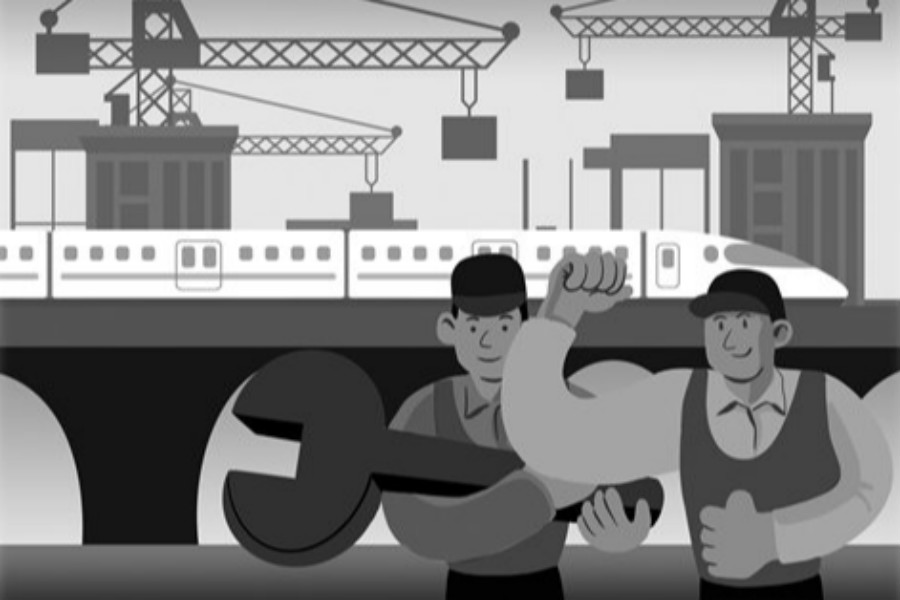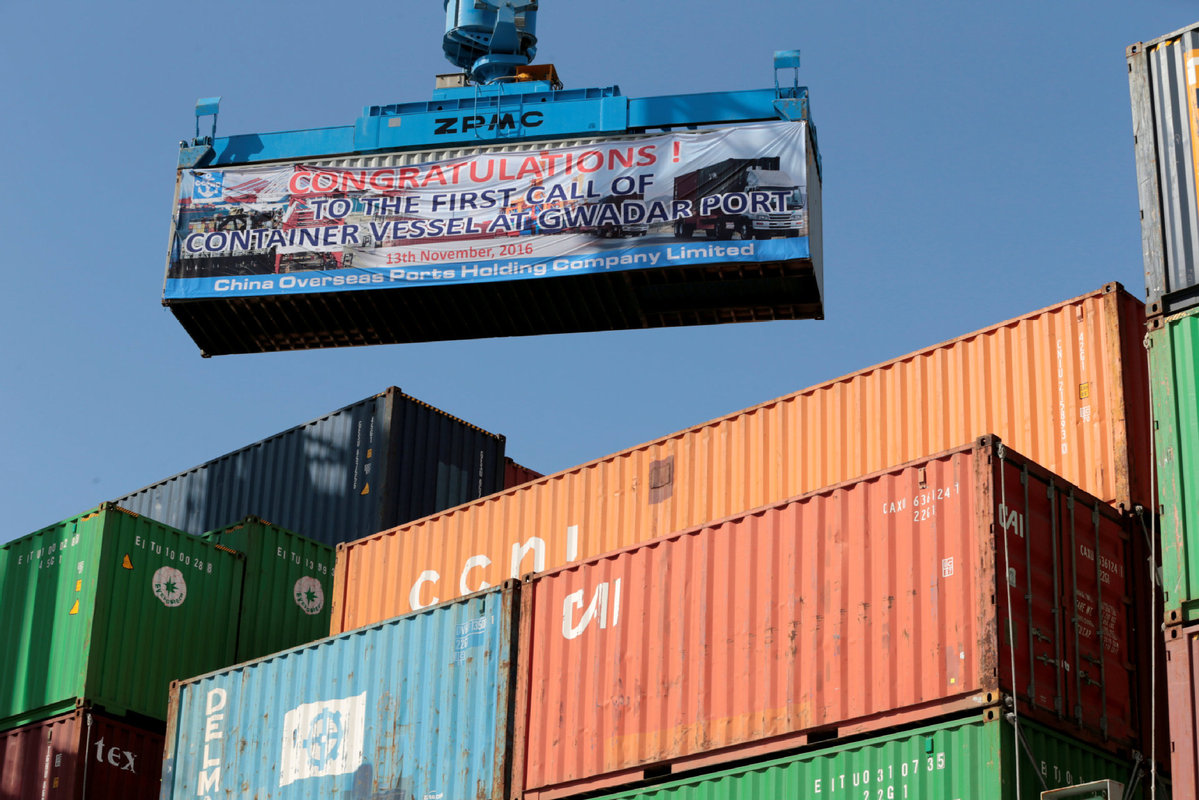全球治理、国际组织、区域合作和“一带一路”是CCG全球化研究领域的重要组成部分。作为中国最早以全球化命名的智库,CCG创办了“中国与全球化论坛”并设置全球化相关国际议题;在海内外举办了“WTO改革”、“多边治理”、“一带一路”等专题研讨会,把“一带一路”这一主题首次带到国际安全与治理领域的世界高规格会议——慕尼黑安全会议。基于多年对全球化领域的全面研究,CCG发布出版了《“一带一路”的国际合作共赢方案及实现路径》,《全球化与逆全球化》、《全球化向何处去:大变局与中国策》等研究报告和图书,其中Edward Elgar 出版社出版的Handbook on China and Globalization是为数不多的由智库在国际权威学术出版社出版的全英文书籍。CCG提出的两项倡议入选首届巴黎和平论坛,为中国智库更充分参与全球治理与国际合作开拓了崭新模式。此外,CCG与WTO、UN 、经济合作国家组织(OECD)、世界银行、国际货币基金组织(IMF)等众多国际组织、国际智库和相关机构建立了良好的长效合作机制。
-

Zamir Ahmed Awan: Beijing, Islamabad committed to making flagship CPEC project
The China-Pakistan Economic Corridor (CPEC) is an example for the rest of the world. CPEC is one out of six planned corridors under the Belt and Road Initiative (BRI) launched by China in 2013. These corridors include the China-Mongolia-Russia Economic Corridor (CMREC), New Eurasian Land Bridge (NELB), China-Central Asia-West Asia Economic Corridor (CCWAEC), China-Indochina Peninsula Economic Corridor (CICPEC), China-Pakistan Economic Corridor (CPEC), and Bangladesh-China-India-Myanmar Economic Corridor (BCIMEC). All of these economic corridors are very well conceived and planned. The importance of each corridor is undeniable. Upon completion of all these corridors, the world will be transformed and enter into a new era. Global economic patterns will change and trade will take on a new shape. However, five of these corridors pass through more than two countries, and it is understood that the more countries involved, the more difficult it becomes due to cultural barriers and variations in political and economic conditions in each country. Similarly, distance also matters; the longer the corridor, the more time and money it may take to complete.Fortunately, CPEC is the simplest and the most feasible. It is a project jointly built by China and Pakistan, so it has fewer countries involved compared to the other five corridors. The 3,000-km-long corridor starts from China’s Kashgar and ends at Pakistan’s Gwadar, the shortest distance among all the corridors. Above all, the relationship between China and Pakistan is ideal, and there is little disagreement between these two countries. In fact, China and Pakistan support each other on all issues at the domestic, regional and global level. There exists a complete harmony. Due to all of these reasons, CPEC has been declared a flagship project, and the governments of both countries are giving it highest priority. Both nations are committed to making it a success. Whatever the difficulties or hurdles, both sides are committed to overcoming them and creating an example for the rest of world.To date, the people of Pakistan are enjoying the fruits of early harvest projects under CPEC. With the launch of CPEC, Pakistan’s GDP improved from 4.7 to 5.5. It was a big jump as the nation has faced many complex issues over the last 4 decades. The country was an energy deficient nation and faced a shortage of electricity. There was load-shedding for several hours on a daily basis. But under CPEC’s early harvest projects, around 10,000 megawatts of electricity were added to the national grid. Load-shedding minimized and almost vanished from the big cities of Pakistan. There are a few other power generation projects at an advanced stage of completion and expected to be completed by 2020. It is expected that Pakistan will face a smaller gap between supply and demand of electricity once all projects are completed in the next few years. The laying of optical fiber lines between China and Pakistan is another advanced stage project, and internet speeds will be improved greatly upon its completion. This will revolutionize the IT industry in Pakistan. It will also reduce dependence on sea-bed cables connecting Pakistan with the rest of the world. Due to damage to undersea cables, which are difficult to repair quickly, Pakistan has been sporadically cut off from the rest of world. A network of roads has been completed across Pakistan, and many more are under construction or in the pipeline. A strong network of roads has made Pakistan very well connected internally. It also has helped to improve connectivity and ultimately enhance business activities. Road networks have contributed to the nation’s socioeconomic development.The country’s railway system is also slated for a complete revamp. The Karachi-Peshawar Railway Line project, also referred to as ML-1, is in the advanced stage of finalization and may be initiated soon. Rail will become the cheapest and quickest mode of transportation for passengers and cargo in Pakistan in the near future. Fast-track industrialization is also expected, as special economic zones (SEZs) are being launched soon. There are nine SEZs in total, three of which are almost ready to be launched: Rashakai SEZ, M-3 Industrial Zone in Faisalabad and Dhabijee Industrial state in Sindh. The SEZs will rapidly change Pakistan’s fate.
2019年2月25日 -

崔洪建 :“法德轴心”何去何从
文章选自《环球时报》,2019年2月12日
2019年2月14日 -

Zamir Ahmed Awan: The year of economic cooperation
A container is loaded on to the first Chinese container ship to depart after the inauguration of the China Pakistan Economic Corridor port in Gwadar, Pakistan, on Nov 13, 2016. [Photo/Agencies] By Zamir Ahmed Awan, a senior fellow with Center for China and Globalization(CCG)
2019年1月23日 -

【China Daily】China’s remarkable transformation in four decades
President Xi Jinping attends a grand gathering celebrating the 40th anniversary of the country’s reform and opening-up at the Great Hall of the People in Beijing on Tuesday. [Photo/Xinhua]
2018年12月21日 -

Zamir Ahmed Awan: IMF pressure won’t weaken Pakistan’s CPEC commitment
By Zamir Ahmed Awan, a senior fellow with Center for China and Globalization(CCG)
2018年11月30日


